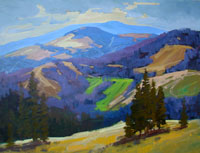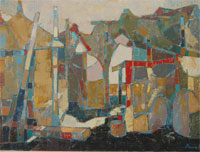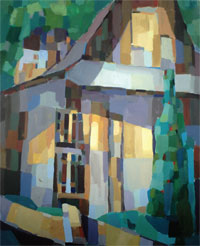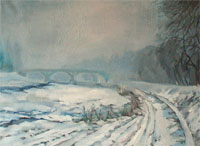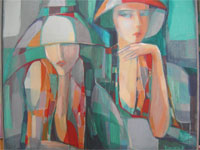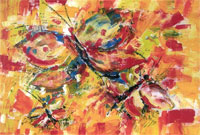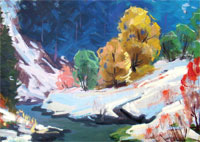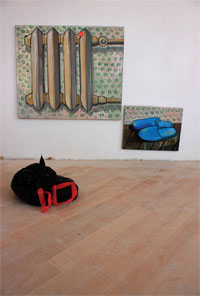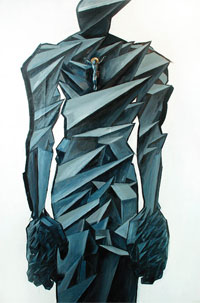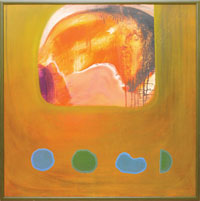Art is a territory where every time one can invent the things that were long ago invented. The matter depends on your "anotherness", your ability to discover the unseen or unheard by all. Then in the search of new forms you are feeling and living anew the whole spiral of the evolution of mankind.
Renouncing all the unnecessary and minor things, the youth circle of Transcarpathia confesses art freedom. Based on the traditions of our region or springing up from the modern art tendencies, their works illustrate the way to self-knowledge, ability to discover anew the universal truths. Brought up in the years free from the hard smack of the Soviet past, youth attacks the official or rather traditional art space of Transcarpathia.
Nowadays Transcarpathian Art Institute is the centre of young talents. The dream of Adalbert Erdeli, the founder of the Transcarparhian school of art, – to create an Academy of art in the region, was realised only in 2003, in fifty years after his death. Every year among the students and graduates of the institute appears a new generation of young masters who come to depict the reality in the conditions of the changeable present.
The theme of human and social becomes more important in the works of artistic youth. Now it is not the post-modern game with the smack of wish. It is an opposition, where the interest to the complex world of a man turns into a try to discover his true nature. It is natural that among the images realised on the canvases there occur the marginal ones and also desperate, Bohemian, wretched and perverted by the curve lines, splashes of stains (N. Tarnay, A. Varha).
Their heroes are not afraid to try on the roles. Avoiding straightforwardness, the young artists tend rather to the transformation of images and styles (P. Ryaska, I. Kopolovets, S. Zavadyak). For all colour richness of the predecessors, they leave behind the nostalgic regret and bravely search the adequate expression for their ideas of making the art space.
In realising ideas the creative youth strives for the laconicism of form (A. Varha, B. Suprunyuk, P. Ryaska). Energetics of the colour creates the feeling of openness (D. Kovach, N. Tarnay). A spectator feels himself the hostage of unpredictable reality, where space is the only asylum combining the ephemeral and the real. (D. Kovach, B. Suprunyuk, I. Kopolovets). Fairy-play of non-figurative painting spread on the canvases of artists, is getting free from self-control, ruining the form or tending to create it. A connection of images with ancient archetypes is quite obvious in such works.
Not all of creative young ones wish to surprise the spectator by exotic, innovations or metaphysics. The supporters of the traditional genres choose the landscapes of the native land (A. Tabaka, M. Haza, A. Brenzovych, V. Brenzovych). In many works one can feel the influence of the impressionistic treatment of colours, the texture of free, unchained stroke, the plastics of painting surface. A new synthesis of formal, technical modes and content is gained by different means – from realistic to almost abstract (PRiaska, M.Haza, A.Tabaka).
The most important thing is that their works are free from commonness. Chimerical illusions, mixes of themes, images, ideas and concepts are programming the forms of artistic expression of the Transcarpathian artistic youth. They work with a claim on global comprehension of being, and at same time they appreciate the cosiness characteristic of Uzhhorod. The creative work of youth is a continuous and irrepressible process. It is getting more active and you will not find the scheme of its motion on a map.
Oksana Havrosh,
art historian.






